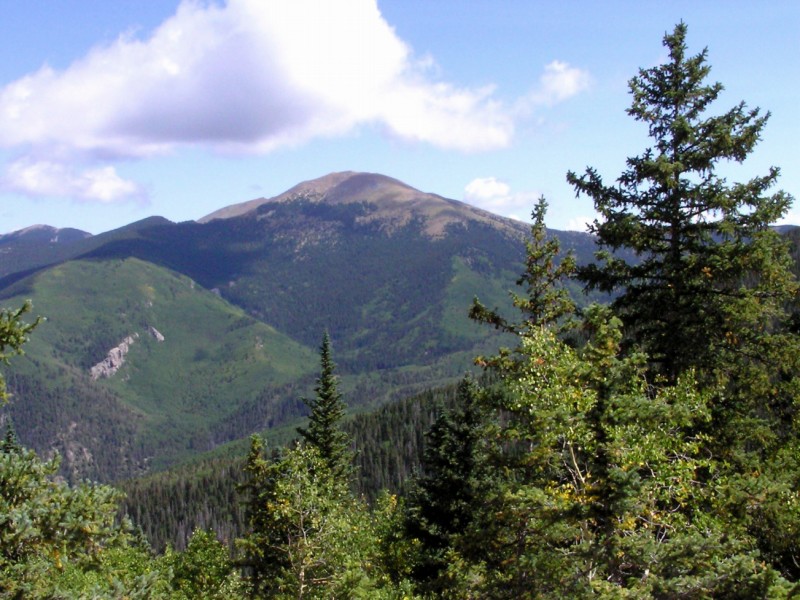
This year marks the fifty-year anniversary of the Wilderness Act, signed into law by Lyndon Johnson after an eight-year negotiation to pass through Congress. It gives legal description and protection to special areas of public land beyond those of "regular" National Forest, Park or BLM lands. Celebrations are being planned around the country including a special exhibit at the Smithsonian Museum.
By definition, Wilderness Areas must be roadless and are for non-mechanized access. Roads are well-documented as detrimental to wildlife populations (1), and water quality (2). Since designation comes after most parts of the country have been settled, wilderness areas tend to be tracts of rougher landscape where few if any roads were ever built. Trail systems for hikers and horseback riders encourage access with less-damaging consequences.
By definition, Wilderness Areas must be roadless and are for non-mechanized access. Roads are well-documented as detrimental to wildlife populations (1), and water quality (2). Since designation comes after most parts of the country have been settled, wilderness areas tend to be tracts of rougher landscape where few if any roads were ever built. Trail systems for hikers and horseback riders encourage access with less-damaging consequences.

Why have we as a country done this? In the early part of the 20th century, the national feeling about wild lands was one of grow-use-dominate. Forest Reserves (the precursor to National Forests) were for timber production, mountains for mining, prairies for farming. A devastating western wildfire in 1910 (see blog) and the Dust Bowl began to change the larger public consciousness.
Aldo Leopold also helped change prevailing ideas when as a young Yale graduate he worked for the Forest Service in New Mexico. It was through his documentation and persuasion that three-quarter million acres in the southern part of the state was administratively set aside by the agency as something called "wilderness" in 1924, the first time anywhere that wild lands were intentionally set aside to be left roadless. It took Congress another forty years to catch on.
However, most Americans know Leopold through his later writing, especially A Sand County Almanac published in 1949. Leopold describes life on his farm and surrounding areas with such depth of feeling that it has inspired others to follow his "land ethic", the idea that landscapes have merit in their own right and that even when farmed or otherwise utilized we should strive to live in some balance with those landscapes. For more on Leopold and some of his legacy, see the biographical film (3).
So on this anniversary year of the Wilderness Act, I intend to re-read Leopold, make a pilgrimage to our local Pecos Wilderness, do what I can to see public lands respected for our future, and be thankful.
(1) http://www.wildlife.state.nm.us/conservation/habitat_handbook/documents/2004EffectsofRoadsonWildlifeandHabitats.pdf
(2) http://www.fs.fed.us/eng/road_mgt/science.pdf
(3) Aldo Leopold Green Fire trailer http://www.youtube.com/watch?v=iQED4YEMx9A
Aldo Leopold also helped change prevailing ideas when as a young Yale graduate he worked for the Forest Service in New Mexico. It was through his documentation and persuasion that three-quarter million acres in the southern part of the state was administratively set aside by the agency as something called "wilderness" in 1924, the first time anywhere that wild lands were intentionally set aside to be left roadless. It took Congress another forty years to catch on.
However, most Americans know Leopold through his later writing, especially A Sand County Almanac published in 1949. Leopold describes life on his farm and surrounding areas with such depth of feeling that it has inspired others to follow his "land ethic", the idea that landscapes have merit in their own right and that even when farmed or otherwise utilized we should strive to live in some balance with those landscapes. For more on Leopold and some of his legacy, see the biographical film (3).
So on this anniversary year of the Wilderness Act, I intend to re-read Leopold, make a pilgrimage to our local Pecos Wilderness, do what I can to see public lands respected for our future, and be thankful.
(1) http://www.wildlife.state.nm.us/conservation/habitat_handbook/documents/2004EffectsofRoadsonWildlifeandHabitats.pdf
(2) http://www.fs.fed.us/eng/road_mgt/science.pdf
(3) Aldo Leopold Green Fire trailer http://www.youtube.com/watch?v=iQED4YEMx9A

 RSS Feed
RSS Feed
